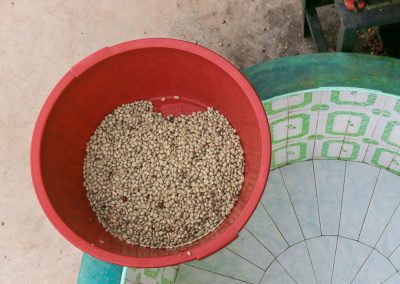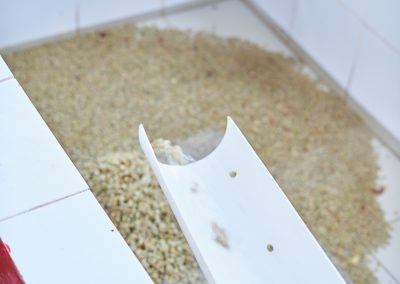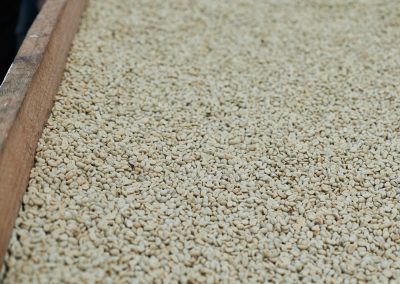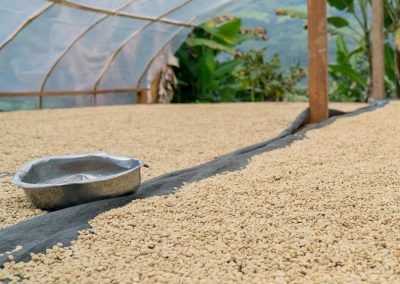Washed Process (aka Wet Process)
Fruit Removal: Typically depulped (skin removed) or demucilaged (skin and pulp removed) within 24 hours of harvest
Fermentation: Depulped coffees are typically held in “fermentation tanks” for 12–72 hours; demucilaged coffees are not commonly held in tanks but moved to drying surfaces or equipment. Fermentation may occur from the moment of harvest until the seeds reach an inhospitable moisture content for them (11% moisture)
Drying Time: On average, 18–36 hours mechanically; 7–15 days on patios, raised beds, or in parabolic dryers
Profile: Clean, articulate flavors; caramel or sugary sweetness; a wide spectrum of fruit acidity depending on other factors; capable of bright, crisp notes
(click above for video)
The quickest and arguably the most efficient of the post-harvest processing methods is often called Washed or Wet process, though, confusingly, it doesn’t always require water. This process is the primary method for preparing specialty-quality coffee in most of Africa, Central and South America (with the exception of Brazil, where it’s uncommon), and select parts of the Asia-Pacific growing region.
Based on place, tradition, climate, and access to resources such as fresh water, your mileage may vary on the particular approach any number of producers will take, but “Washed” as a loose definition typically means that the coffee fruit has been removed from the coffee seed as quickly and as cleanly as possible. Some professionals and even some coffee markets and contracts differentiate between “Fully Washed,” which does use water, and other types of “Washed” coffees, such as those that have their mucilage mechanically removed.
This process is probably the one in which the use of the term “fermentation” is most often used incorrectly, as we often assume that fermentation happens only when the seeds are stored, contained, or held in an actual “fermentation tank.” On the contrary, fermentation begins the moment there is an access point in the fruit that allows microorganisms like yeast and bacteria to begin metabolizing sugars such as fructose and sucrose. Often, this access point is created at the time of picking, when the fruit and stem are separated and a small hole is typically created. Fermentation can take place in Washed coffees as long as there is either fruit material (mucilage) and/or a certain amount of water (11% moisture) available as a fuel source.
That being said, generally, in the coffee industry, we describe the “length of fermentation” as being a period of time in which coffee is piled in tanks or held underwater, with the goal of either accelerating or retarding the ability and access that microorganisms have to the fruit material. “Open,” or “dry fermentation” are terms used to describe coffees that are depulped (have their skin removed) and are then placed in open-air tanks or buckets and allowed to sit in their mucilage, typically for 24 hours or less though occasionally for as long as 72 hours. “Underwater,” or “wet fermentation” can take longer, depending on the climate, water quality, and activated populations of microorganisms.






